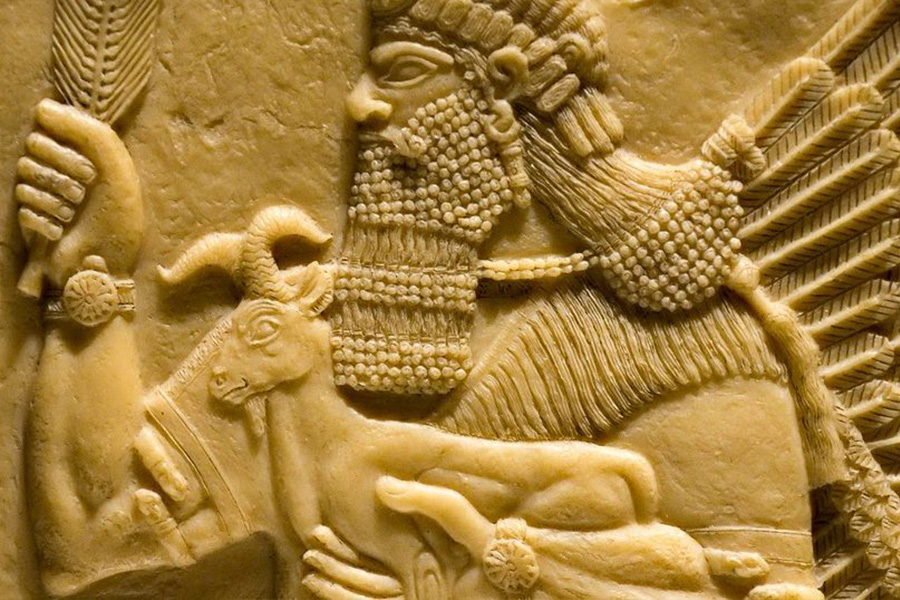The word atah (𐤀𐤕𐤄) means “you” meaning a person or persons being addressed in the nominative or objective case.
The Paleo-Hebrew language or the original language of the Ābarayam is one spoken with an emphasis on the rauakh (breath, wind, spirit). With the language of the Ābarayam, each letter has a meaning and a number associated with it that adds meaning to each word they’re used with. Below you will be able to learn more about the letter in Ancient Hebrew, Yiddish Hebrew, Greek, and much more.
Letter Meanings
| Letter | Meaning |
|---|---|
| 𐤀 (a) – ah | Ox, strength, leader |
| 𐤕 (t) – ta | mark, sign, covenant, signature, identification of people, places, or things |
| 𐤄 (h) – ha | look, behold, the, reveal, breath, life, man Suffix: to, toward, in the direction of, -ward, her, feminine form, it |
| Ābarayat Number | 62 = 1 (a) + 400 (t) + 5 (h) |
| Hebrew Gematria | 110 = 1 (a) + 100 (t) + 1 (a) + 8 (h) |
| English Gematria | 180 = 6 (a) + 120 (t) + 6 (a) + 48 (h) |
| Simple Gematria | 30 = 1 (a) + 20 (t) + 1 (a) + 8 (h) |
Based on the meaning of the letters the word could be defined as:
- “Experience of a covenant of breath (life)”
- “Know(ledge) of a mark of breath (life)”
- “Experience of a covenant of man”
- “Know(ledge) of a mark of man”
Definitions for 𐤀𐤕𐤄 / atah
| Language | Word | Transliteration | Pronunciation | Definition |
|---|---|---|---|---|
| Ābarayat | 𐤀𐤕𐤄 | atah | aw-taw’ | to come, things to come upon, bring, become, you (masc. sing.), thee, thou, ye. |
| English | you | you | yoo | the pronoun of the second person singular or plural, used of the person or persons being addressed in the nominative or objective case: |
| Hebrew | אַתָּה | attah | at-taw’ | to come, you (masc. sing.) |
| Arabic | أنت | ‘ant | an-taw | you, thou |
| Greek | σύ | su | soo | you (early mod. Eng. thou) |
Images for 𐤀𐤕𐤄 / atah


Definitions for 𐤀𐤕𐤄𐤉 / atahay
When adding the 𐤉 (yad) to the end of a word, it creates a possessive of the original word. It can either signify “my…” or identify a member of a nation. For example, 𐤏𐤁𐤓 (Ābar) is the progenitor, but 𐤏𐤁𐤓𐤉 (Ābaray) is the singular descendant of him also known as a Hebrew.
| Language | Word | Transliteration | Pronunciation | Definition |
|---|---|---|---|---|
| Ābarayat | 𐤀𐤕𐤄𐤉 | atahay | awt-hey | you're |
| English | you're | you're | yoor | contraction of you are |
| Hebrew | אַתָּהי | athe | aw-teh-ee | you're |
| Arabic | ||||
| Greek |
Images for 𐤀𐤕𐤄𐤉 / atahay


Definitions for 𐤀𐤕𐤄𐤉𐤌 / atahayam
When adding the 𐤌 (mayam) after the 𐤉 (yad) to the end of a word, it creates a plural of the original word. It can identify multiple members of a nation. For example, 𐤏𐤁𐤓 (Ābar) is the progenitor, but 𐤏𐤁𐤓𐤉𐤌 (Ābarayam) are the plural descendants of him also known as Hebrews.
| Language | Word | Transliteration | Pronunciation | Definition |
|---|---|---|---|---|
| Ābarayat | 𐤀𐤕𐤄𐤉𐤌 | atahayam | aw-taw-yawm | you're |
| English | you're | you're | yoor | contraction of you are |
| Hebrew | אַתָּהים | athem | aw-teh-eem | you're |
| Arabic | ||||
| Greek |
Images for 𐤀𐤕𐤄𐤉𐤌 / atahayam


Definitions for 𐤀𐤕𐤄𐤉𐤕 / atahayat
When adding the 𐤕 (tau) after the 𐤉 (yad) to the end of a word, it creates a plural of the original word. It identifies the language or a sign of a nation’s existence. For example, 𐤏𐤁𐤓 (Ābar) is the progenitor, but 𐤏𐤁𐤓𐤉𐤕 (Ābarayat) is the language of him also known as Paleo-Hebrew language.
| Language | Word | Transliteration | Pronunciation | Definition |
|---|---|---|---|---|
| Ābarayat | 𐤀𐤕𐤄𐤉𐤕 | atahayat | aw-taw-yawt | |
| English | ||||
| Hebrew | ||||
| Arabic | ||||
| Greek |
Images for 𐤀𐤕𐤄𐤉𐤕 / atahayat


Classification
You can continue your studies of the words by viewing Strong’s entries for:



